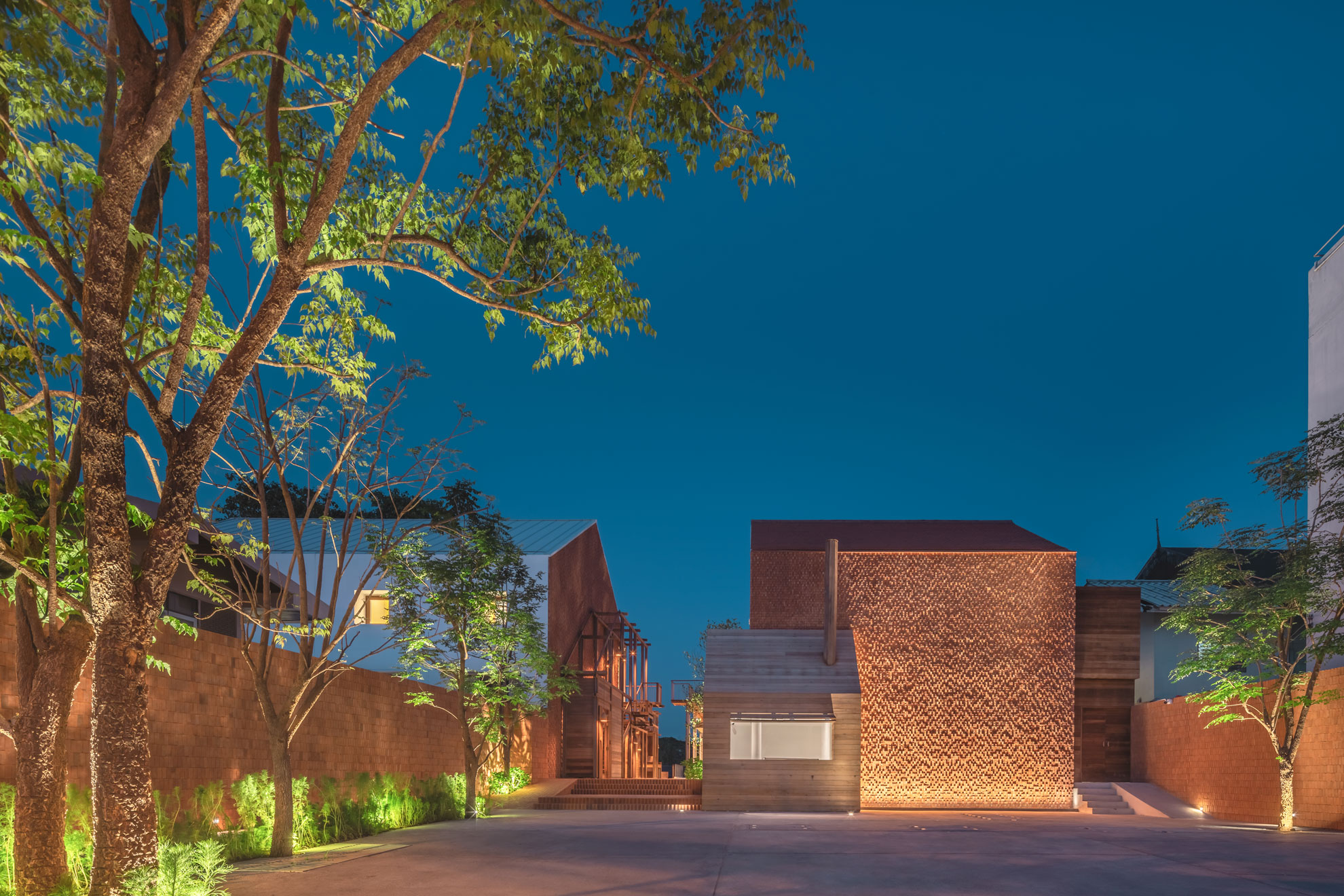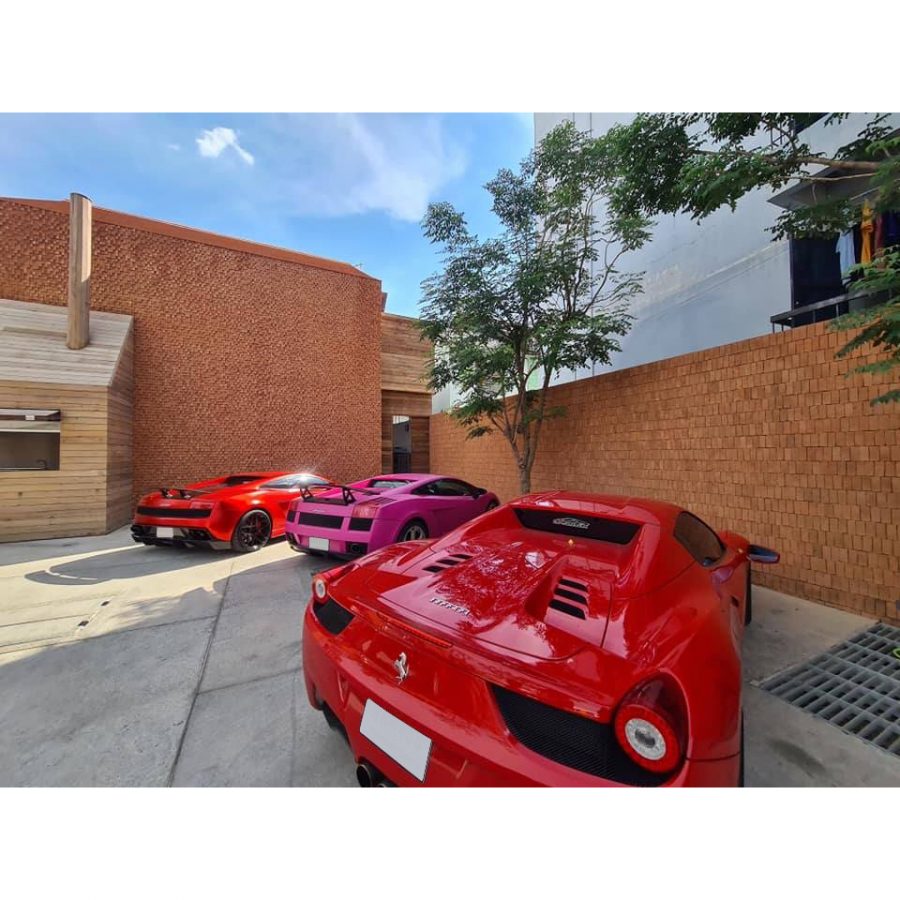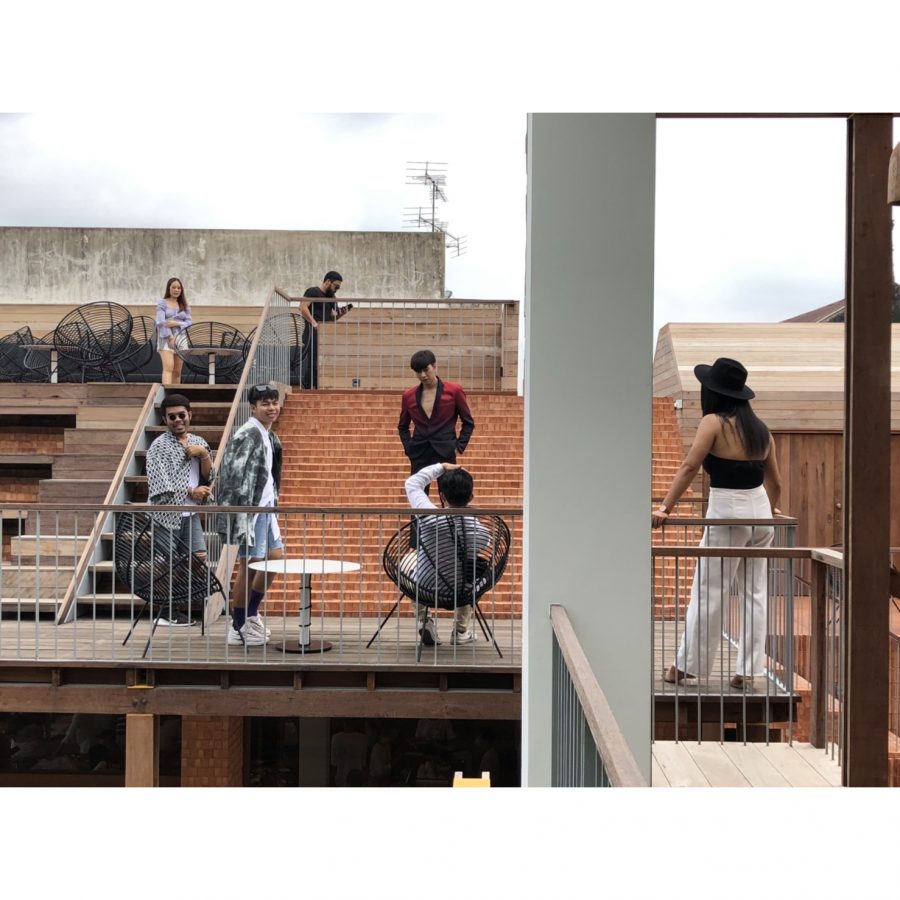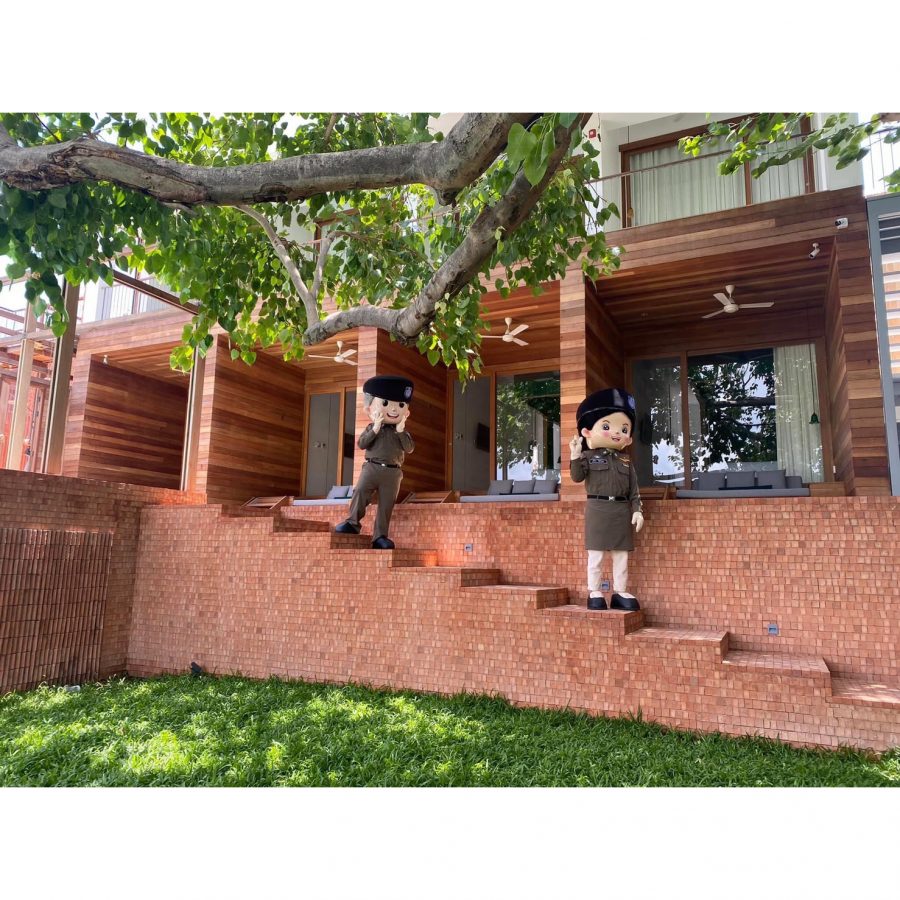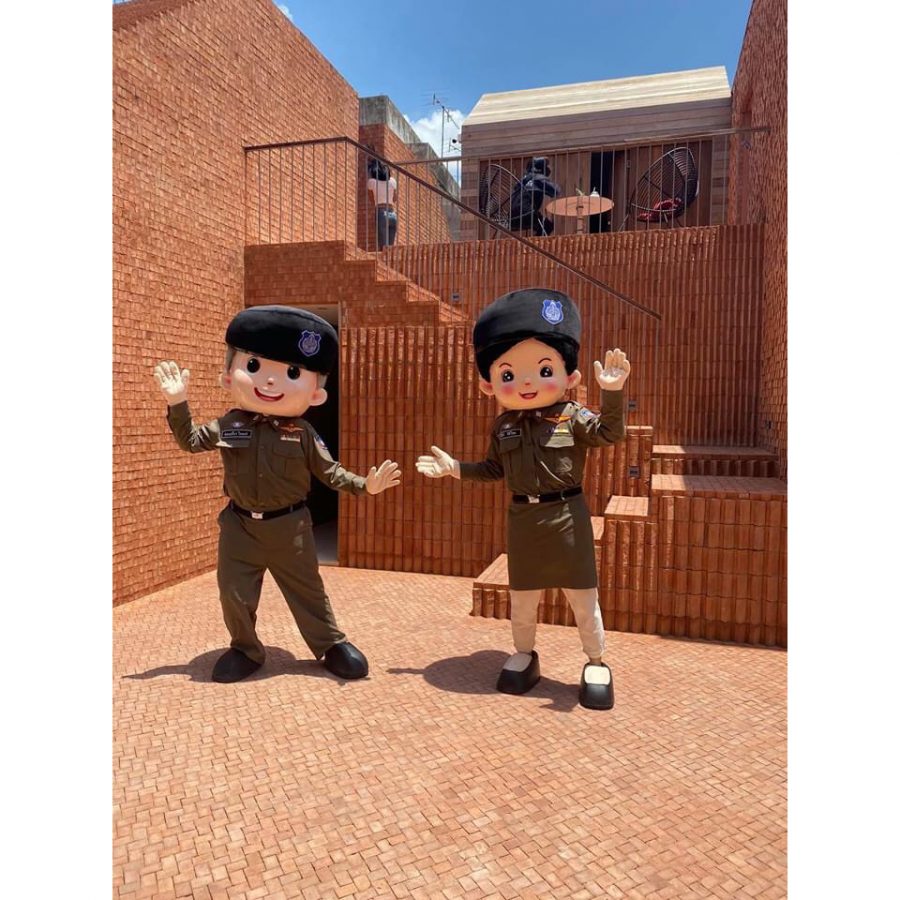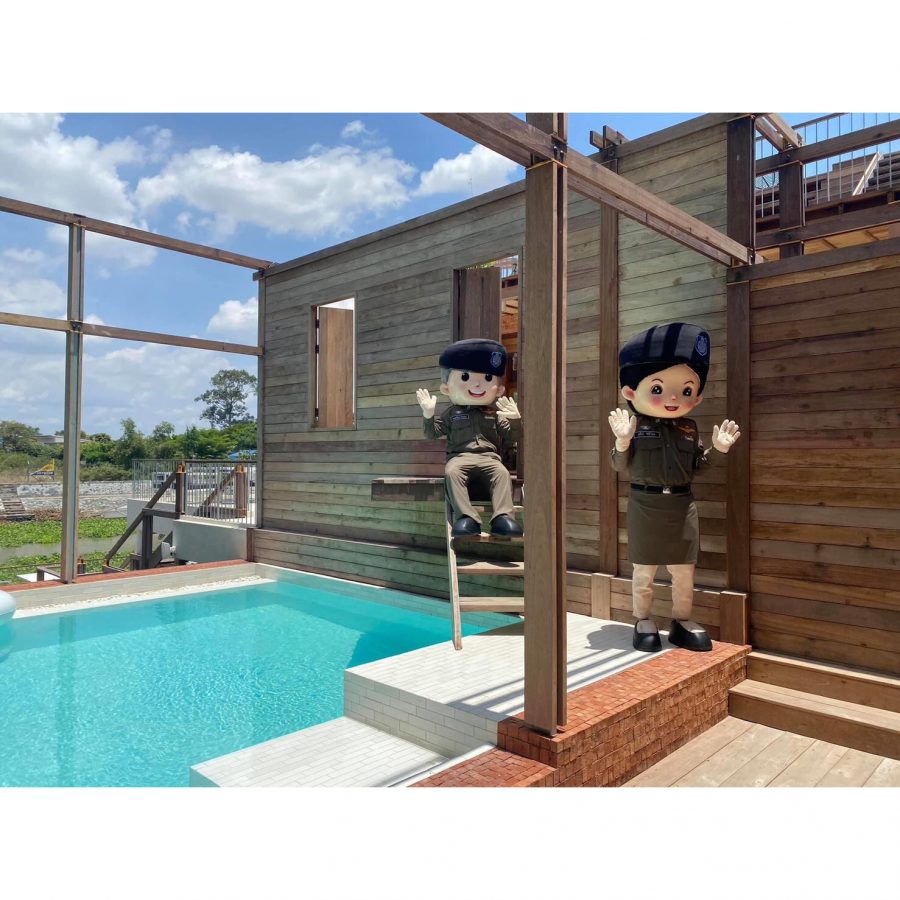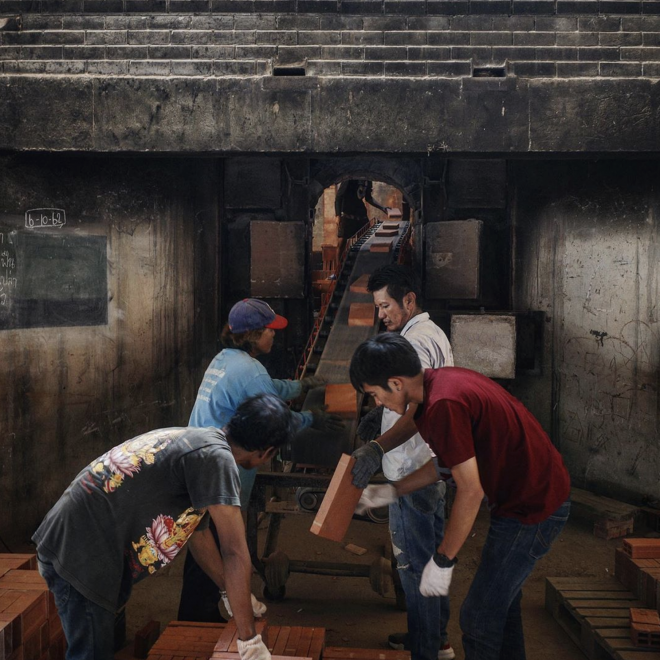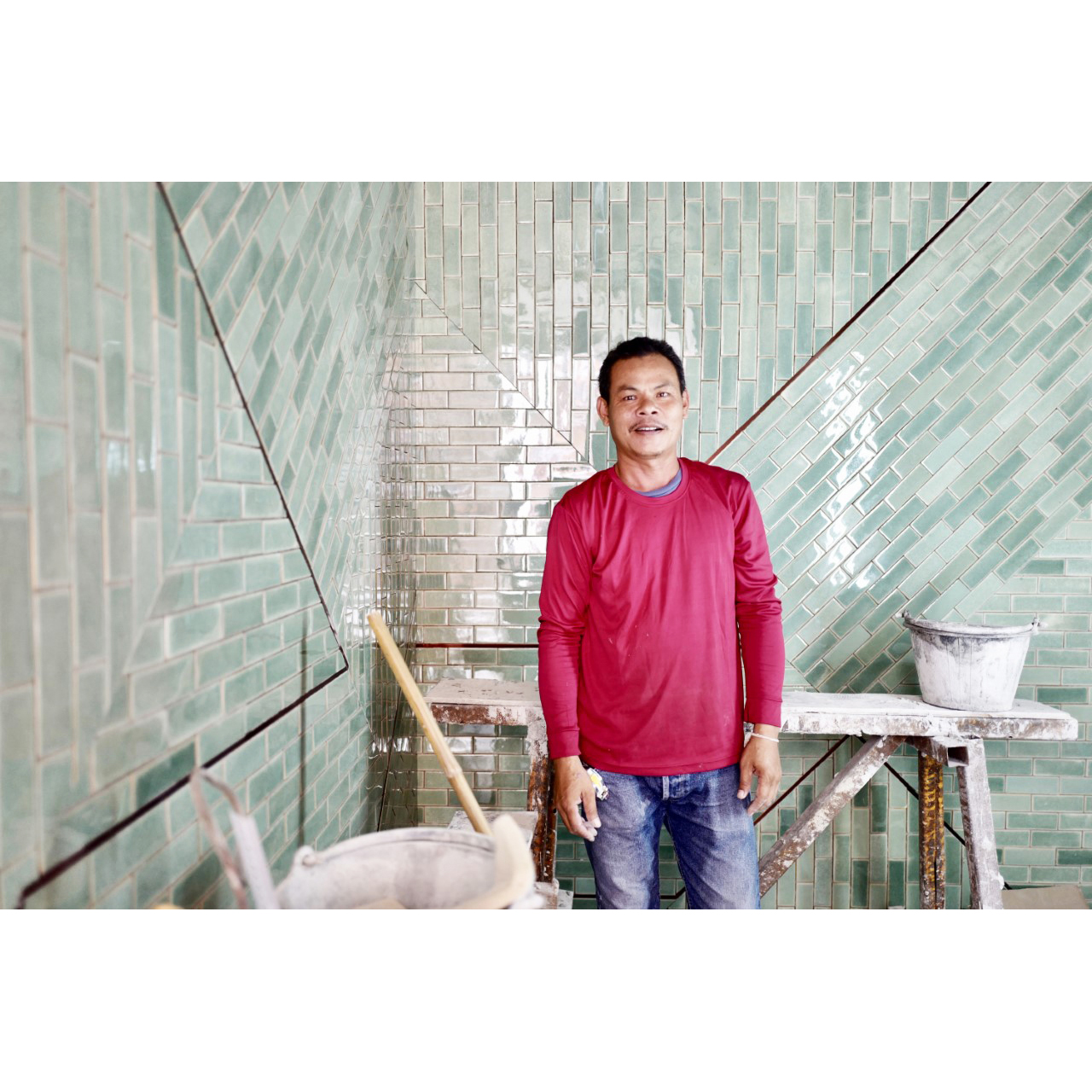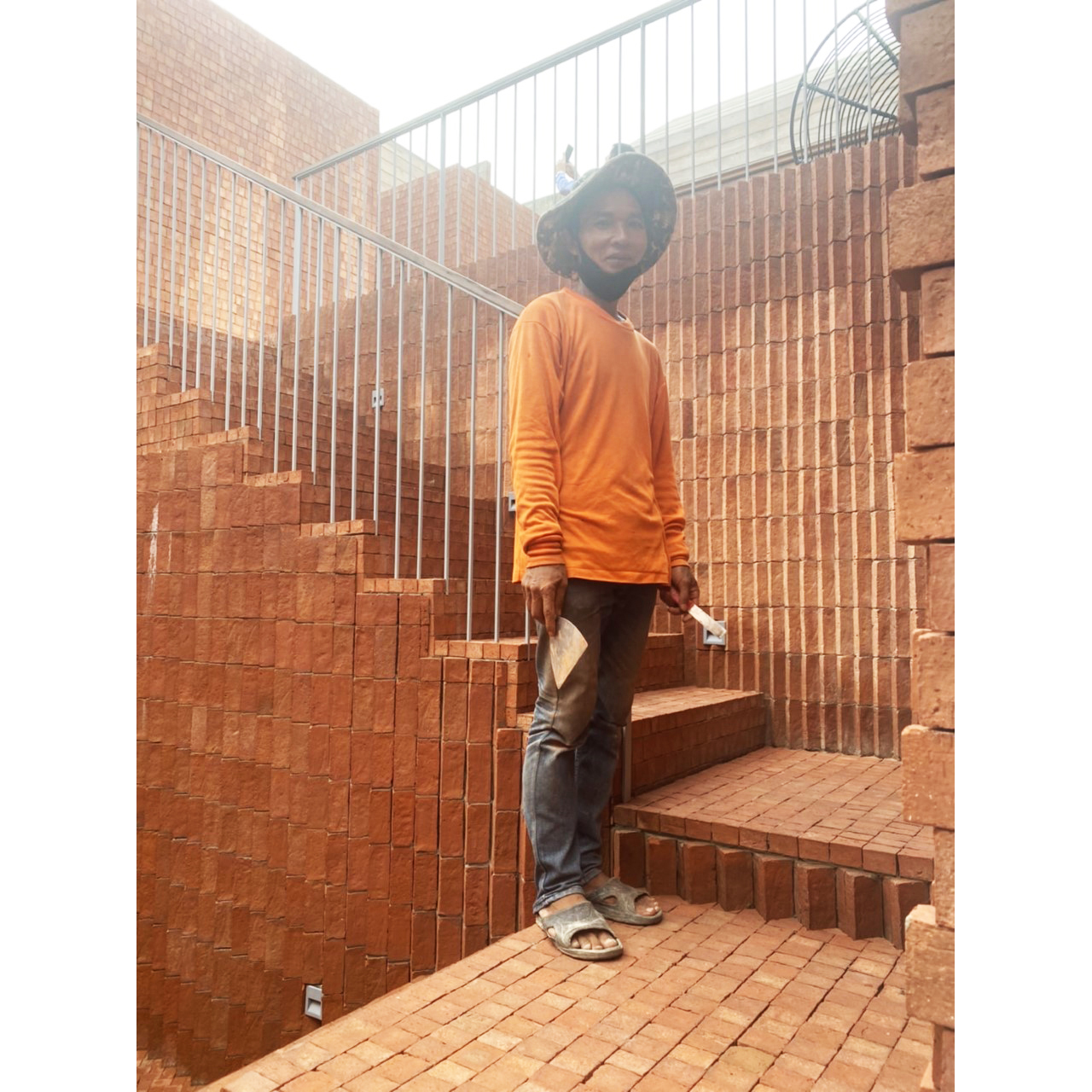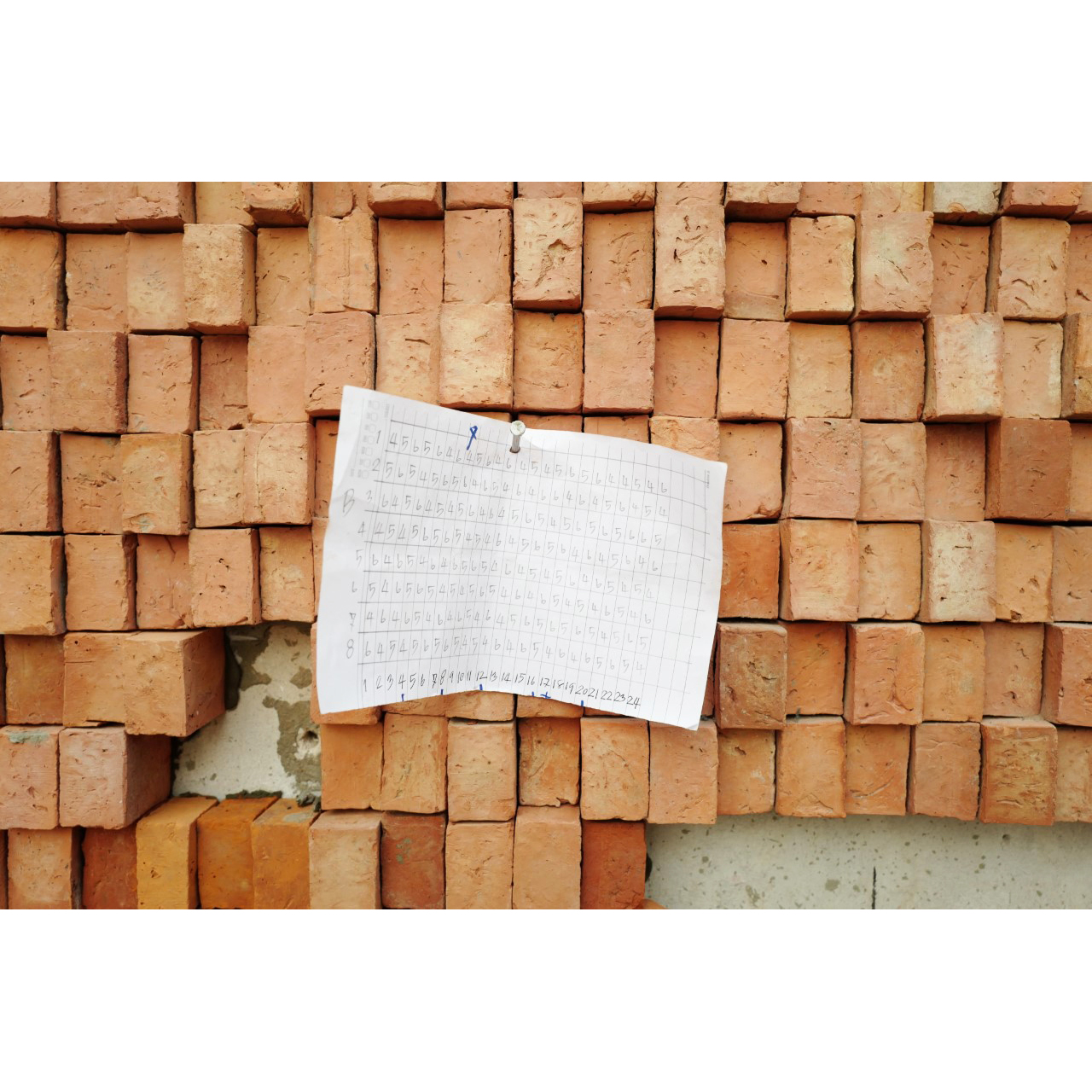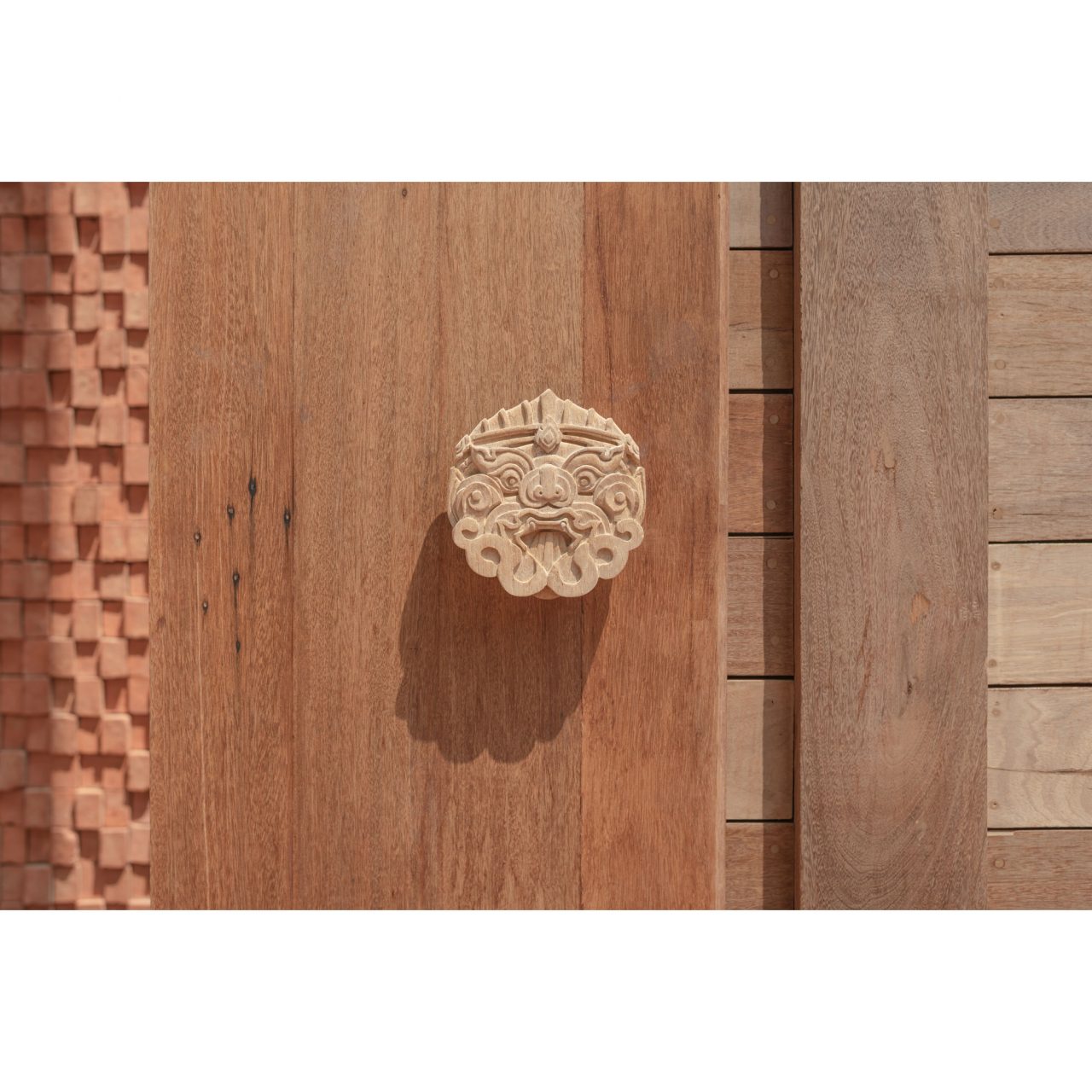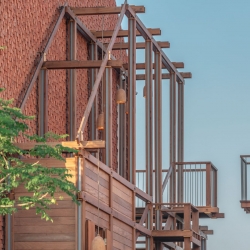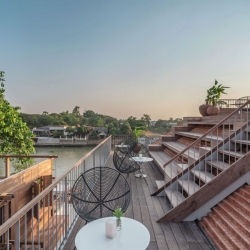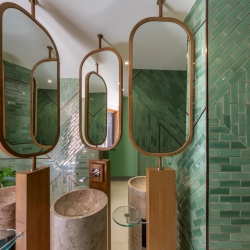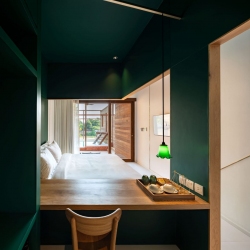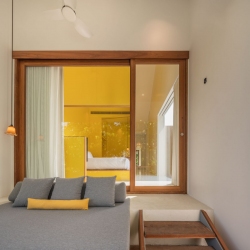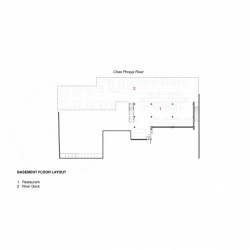HOW DOES THE LATEST PROJECT BY ONION, WHICH RECENTLY OPENED ITS DOOR TO THE PUBLIC MONTHS AGO, FIND ITS WAY AROUND AN UNEXPECTED OPPORTUNITY DURING THE TIME OF COVID-19? WHAT IS IT THAT BRINGS PEOPLE TO THIS BRICK ‘SPOT’ IN AYUTTHAYA? OBSERVED M.L.CHITTAWADI CHITRABONGS
TEXT: M.L.CHITTAWADI CHITRABONGS
PHOTO: W WORKSPACE EXCEPT AS NOTED
It is bizarre and wonderful to observe a situation during the time of pandemic and the last construction phase of Baan Pomphet, a 160-seat grilled river prawn restaurant and an 8-room hotel, located next to an ancient brick fortress named “Pomphet” in Ayutthaya. Expected to be opened in March 2020, COVID-19 hit Thailand in the same month. The Thai government had announced Emergency Decree On Public Administration in Emergency Situation on 26th March 2020 until 30th April 2020 that people should “stay home, stop the disease, for the nation”. There was curfew prohibited people to enter department stores and dine-in at a restaurant. Only take away food was allowed. I started to doubt if Baan Pomphet would have guests at all. After these three years to turn a dream into reality, the owner and the construction team had devoted themselves to complete every details of the project. Brick plinth in zig zag pattern was ready for the white spirit house and the Brahman shrine. Hotel amenities were carefully selected. New plants were in place. Existing huge Bodhi Tree was trimmed. Drinks and food menus were neatly printed with the photographs of Baan Pomphet itself on the covers of the love and care that exhibited all over the place.
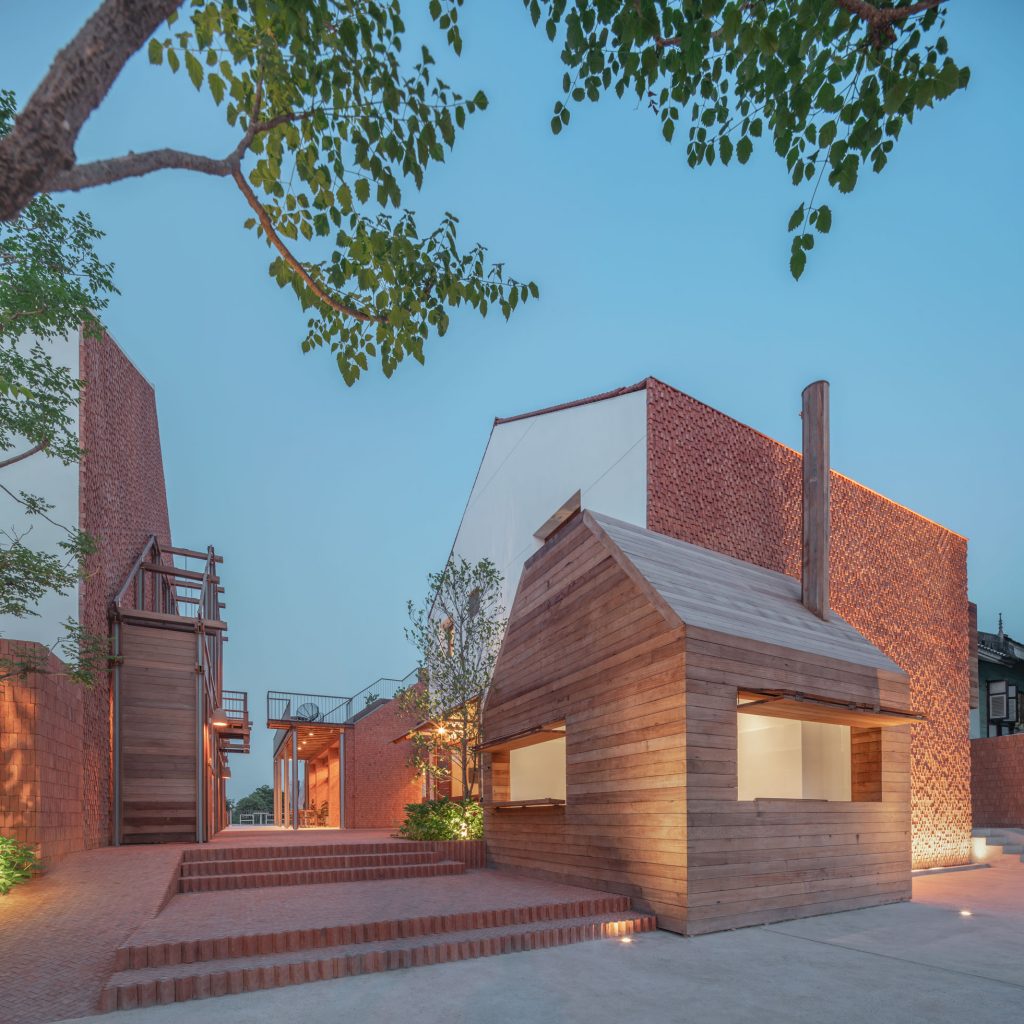
On 8th May 2020, the owner of Baan Pomphet decided to start the business by selling coffee, soft drinks and cakes apart from postponed the opening of restaurant and rooftop bar in order to cooperate with the government policy of banning the selling of alcohol. Although, this might be bad for business. In the reality was the opposite. Business was good. Baan Pomphet suddenly became a ‘check-in spot’ and even a destination for pre-wedding photography. The phenomenon was mainly about taking self-portrait photographs, posted them on social media and sometimes in a format of Ayutthaya’s new ‘tourist spot’ review pages. Customers appeared to be like celebrities, young, very good looking and dressing up with styles to match the colour scheme of Baan Pomphet. I have no knowledge of who they are. They continue to come even if the place was not fully operated. The ambiguity of my feelings has to do with the thought that overusing the space can ruin the life of materials in a short time. Another reason which is more personal is that a restaurant or a hotel that is full of people taking self-portraits may not be the place that I want to go to.
Customers are queuing to check-in like queuing in museums. They reserve parking spaces for their red Ferrari sports cars. They climb the roof built with bricks down to the wooden terrace as if our rooftop were an ancient monument. Even the “Thailand Tourist Police Bureau” of Ayutthaya came. In a strange and wonderful way, they danced and moved around the project in a very hot weather, almost 40 degree Celsius, in fluffy police uniform mascot outfits.
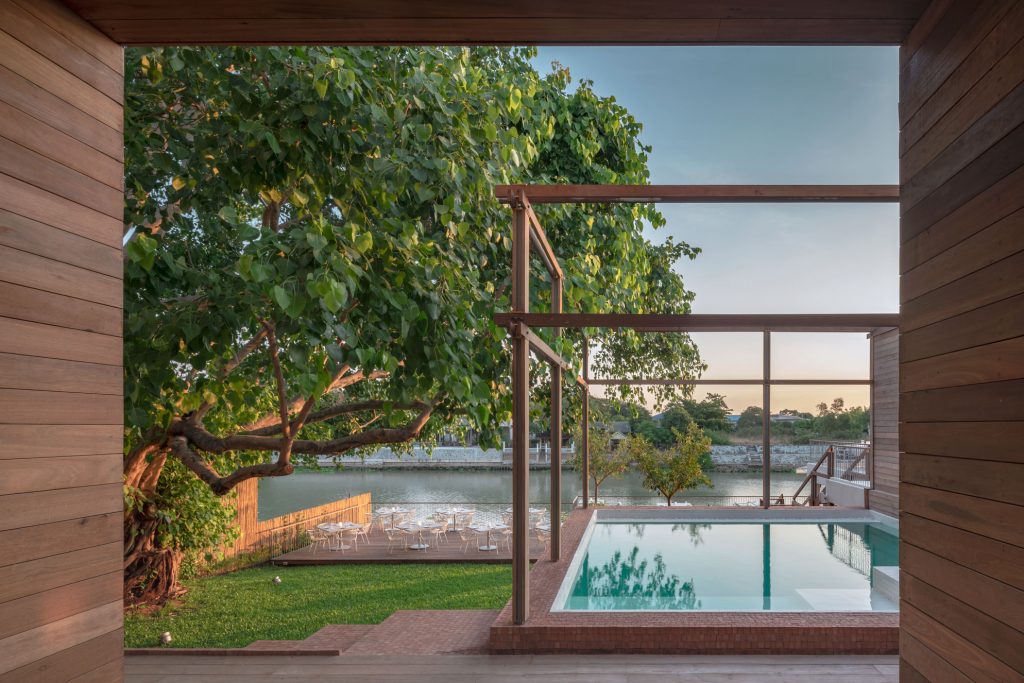
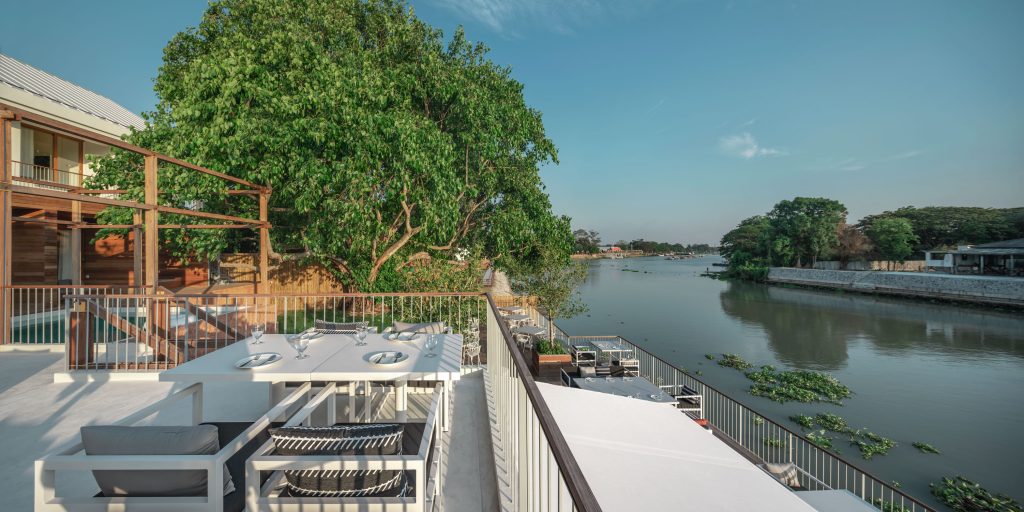
What is it that people like in Baan Pomphet? The only way to find out the answer is to ask people and I start by asking friends, colleagues and family members. Architects tend to say that it is in the master plan, the way in which the two buildings are separated: the restaurant and the hotel, and leave the main circulation for everyone to see the river right away when they enter the site. The place is therefore welcoming and as one walks in, there are more surprising elements further down towards the river such as a viewpoint of brick fortress next to a place where the Pasak River meets the Chao Phraya River, and a huge Bodhi Tree next to a swimming pool which only visible to the guests from the inside. An architect friend who obsesses with landscape photography went to Baan Pomphet because of the photographs that he had seen from social media. He was looking for a new cafe while traveling to shoot temples in Ayutthaya so he stopped by Baan Pomphet. What he encountered was people taking self-portraits, which was annoying to him because there was no space left for him to take photographs. He thought that it might be good for marketing, but personally he did not like the situation. Being too late for a shoot was his feeling of “falling out of trend”. My mother likes the fact that every square inch of the project is utilised. The land is 1,492 square meters and we manage to build 2,020 square meters total floor areas within a limit of laws and regulations governing the building height in an older part of Ayutthaya. These answers are not satisfying though, because they are criteria for every project and they are things beyond my control. It is also difficult to accept bricks as the answer. Bricks are a common material in Ayutthaya. A brick wall is a brick wall. I only add design to it.

Photo: Donlaporn Chanachai
Baan Pomphet’s handmade bricks are produced by the local brick factory named BPK (บปก บางปลากด), a 30-minute drive from the site. The bricks are especially small, arranged in 6 different walls and floor patterns and its colour is a special orange. Why BPK? BPK bricks are baked by firewood in a brick oven, loaded bearing walls without any reinforced concrete. Its dome structure has an oculus on the top, like Pantheon in Rome. A perfect time to visit BPK brick oven is at noon, when a beam of light gives high contrast to the shadow. Bricks that come out from this oven have slightly random orange colours as BPK brick ovens are manually controlled unlike any other factories that use gas to control the bricks’ quality and the consistency of their orange colour.


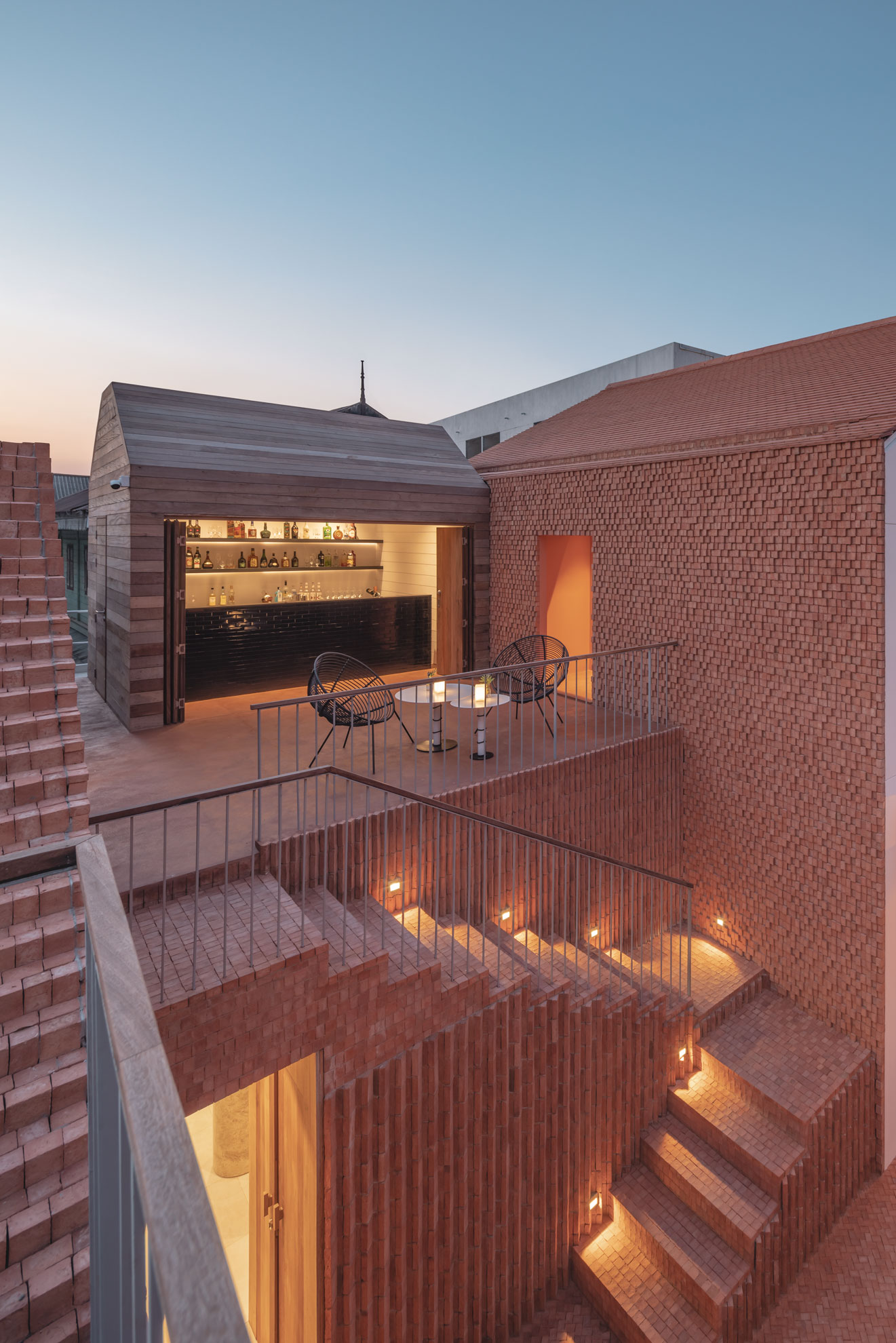
A most interesting answer to the question, what people like in Baan Pomphet, is given referent to a marketplace scene in Aladdin movie (2019). I watched the scene and saw narrow spaces, brick walls painted in pink, soil ground, wooden structure balcony, green colour interior room, layers of canopies, celadon green water jars and above all utilised rooftops, where Aladdin and Princess Jasmine run and jump to another rooftop. Surprisingly, the similarities between an Indian marketplace and Baan Pomphet are there. I did not think about marketplace when I designed Baan Pomphet, so did Arisara and Siriyot. Arisara likes the separation of mass and function so that the guests can explore each spaces when they walk through Baan Pomphet. She also appreciates craftsmanship, like Siriyot who enjoys the handmade brick textures and the rhythm of spatial composition in relations to existing elements of the site such as the Bodhi Tree and the curved rivers. We all agree that we love architecture of India, but we never thought of India including Indian marketplaces when we designed Baan Pomphet. Generally, marketplaces are often friendly, welcoming and charming as they are usually built without an architect. Baan Pomphet, in a strange way, might create a feeling of coziness because of the selected scales that are normally found in vernacular buildings from various parts of the world.
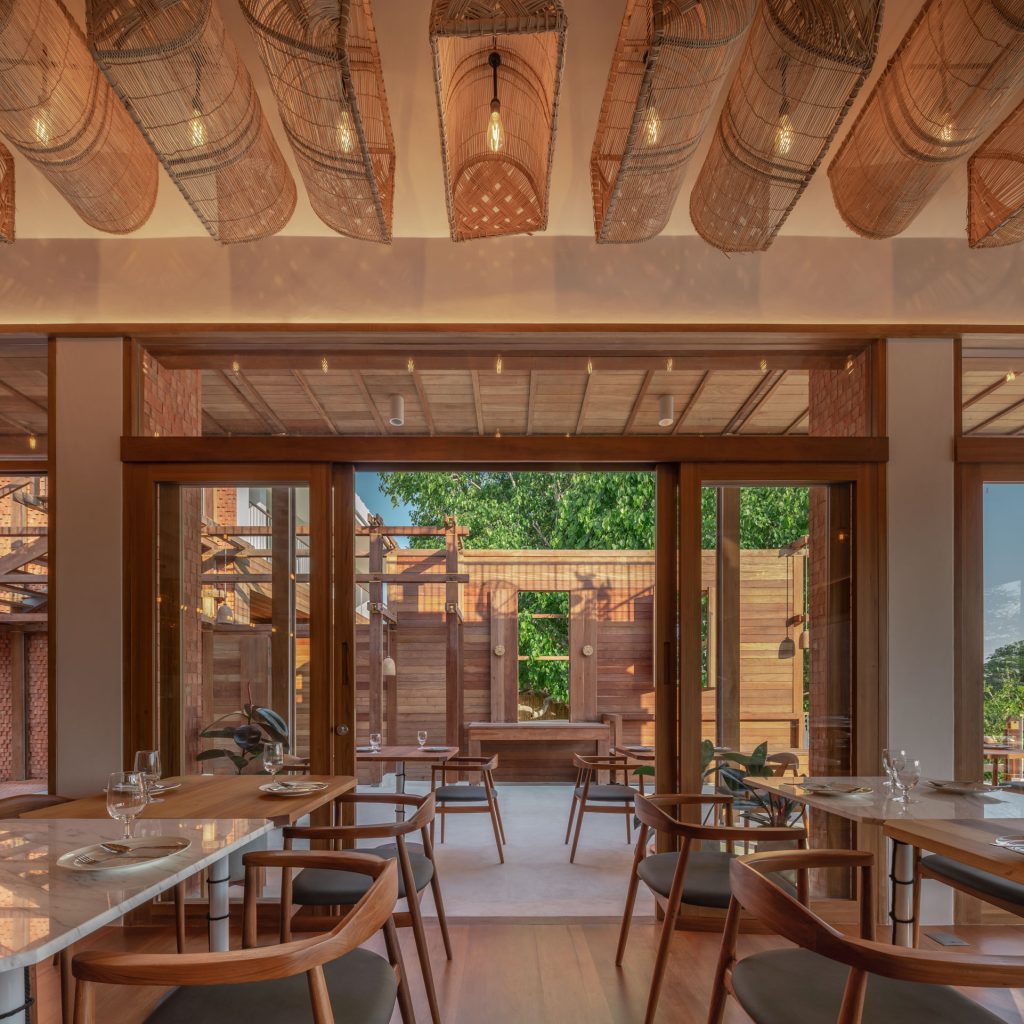
The owner likes Baan Pomphet because of a feeling of “returning home”. She is an Ayutthaya local, who has already run a successful grilled river-prawn restaurant not far from and on the same road with Baan Pomphet. Her existing restaurant is like any other Ayutthaya grilled river-prawn restaurants, charmingly built without an architect. It is so brave of her to hire Onion to design a new restaurant and a small hotel in a most beautiful piece of land in Ayutthaya. It must have been a decisive investment. She managed to order design objects and things for Baan Pomphet by herself. Such objects include the chairs, chanang (ชนาง) fisherman’s utensils for catching river prawns that are designed as restaurant’s lamps, the signages, the cushions and the plants. This is hard work and very impressive. To the owner, Baan Pomphet is a home for her family. Customers are her guests. She has private bedrooms for her family above the kitchen. The owner lives in Baan Pomphet and it gives her a feeling of home coming which she could not find elsewhere.
Baan Pomphet, and this is what I perceive as true, portrays trust between the owner, the architects and the craftsmen. The project enables everyone to exhibit their best skills. I remember the first time when I saw a craftsman named Mr. Pajon (ช่างผจญ), dressed in shocking pink long-sleeve T-shirt, tiled celadon green handmade ceramic tiles in diagonal mixed with grid patterns. He won my respect. He worked quietly with full concentration to complete the ceramic tiles of the entire lavatory space by himself. Mr. Pajon went back to his hometown right after his task was achieved. It is hoped that I can call him back to work again if necessary. A rope tying guy who completed the restaurant’s interior walls had some sleepless nights figuring out how to make our construction drawings, tying ropes through wall’s gaps, possible in a larger scale. The same is true with our brick layering guys, one person is responsible for studying the coding system of one brick pattern. Mr. Keaw (ช่างเขียว) for an example worked with smallest sized bricks in zig zag pattern and completed the entire floor of the main circulation by himself to the point that his hair was full of orange dust. Chunsiri Chai-ear who received an award in Thai architecture from the Naris Foundation in the year 2019 drew the Hanuman doorknob to be later on handcrafted in teak. Everybody is proud of what one does for the project. Friendship is our reward.

Life of Baan Pomphet goes on. Friday 12th June 2020 was the first time that the grilled river prawn restaurant was fully operated. It was a great success. Two rounds of guests came for dinner for each table. Tables on the river deck and the space under the upper deck built on piles were full. Lotus root and Thai Mackerel stir-fry became one of the popular dishes. I was wondering whether the food was served through a service pathway next to the fence as intended. The answer was no. The food had to be served through a secondary passageway in the basement of the restaurant to the river deck. That narrow service pathway next to the fence was booked by the guests for photograph shootings. This is a nice surprise. There is no way to find out why people like the service pathway. Is it the freedom of circulation? Is it a space where nobody is supposed to take photograph? Or is it a feeling of adventure, walking up and down a very narrow staircase? Perhaps, a way to conclude this article is to borrow an Indian saying, “Everything will be alright in the end, so if it is not alright, it is not yet the end”.
///
This article is written to celebrate trust, friendship and memories through the last construction phase of Baan Pomphet during the time of COVID-19. Before that, I would like to express my gratitude to the founders of an architectural firm called Onion, named Arisara Chaktranon and Siriyot Chaiamnuay. They invited me to collaborate with Onion in this project. The scale was right and architecture of Baan Pomphet required, somehow, cultural elements. Baan Pomphet is the first project that the three of us worked together. Onion team made Baan Pomphet possible. Numporn Nilavajara single-handedly drew the whole construction drawings. Tul Watthanasuk was responsible for every interior details. Thiti Panacharas drew the wooden straight flight staircase to the river deck. I thank Onion. My voice in this article therefore has two roles, a co-architect and an observer.

